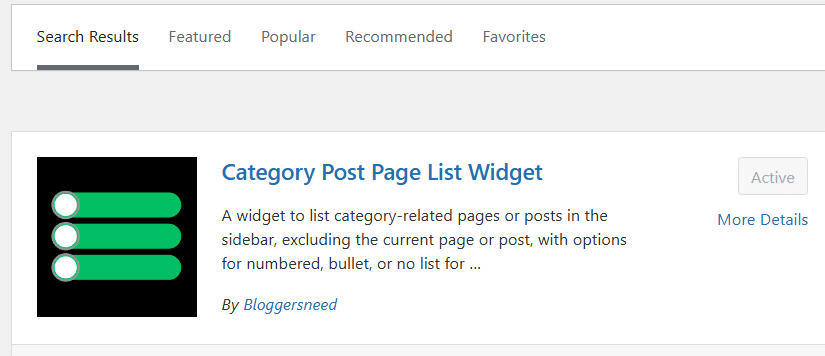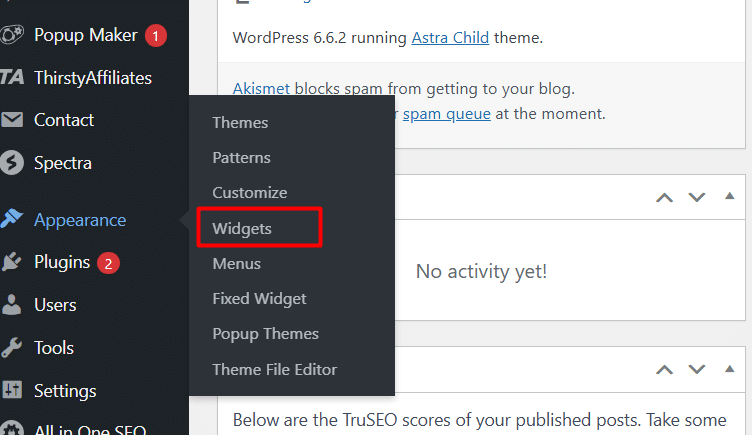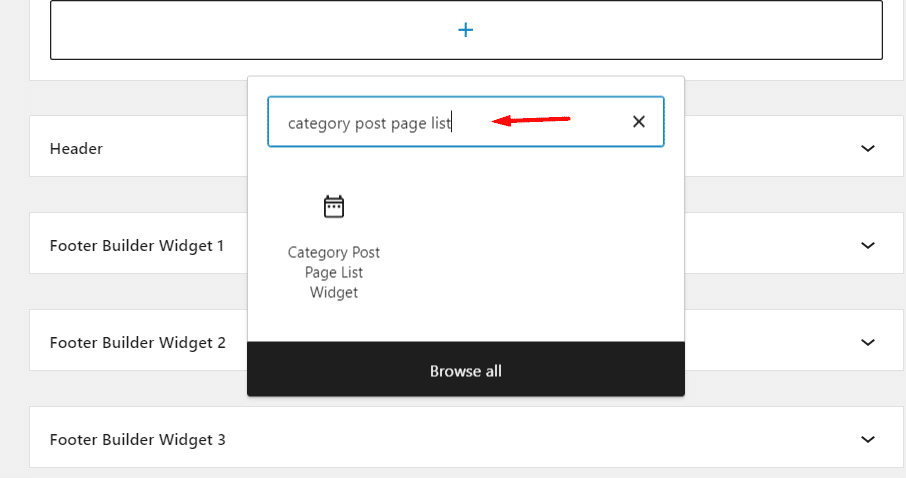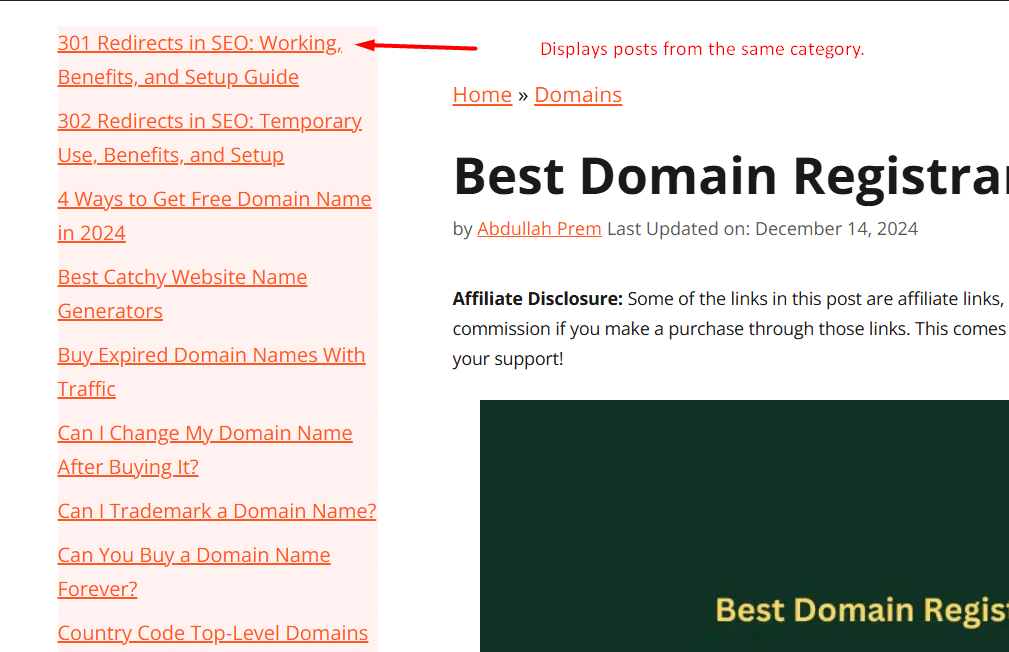
After over a decade in the field of Blogging, Bloggersneed has launched its first official WordPress plugin, designed to enhance website functionality and user experience.
The Category Post Page List Widget enhances your WordPress site’s content organization by simplifying the display of categorized posts and pages through customizable lists, ensuring a better user experience while automatically excluding the current page.
The widget’s installation takes minutes through WordPress’s plugin manager, and its intuitive configuration options let you control layout, titles, and item counts. It boosts SEO through improved internal linking and semantic clustering, while increasing user engagement by promoting content discovery. Understanding its full capabilities will transform how you showcase your website’s content.
Table of Contents
What is Category Post Page List Widget?
The Category Post Page List Widget serves as a versatile tool for displaying your website’s content in an organized manner.
Developers from Bloggersneed specifically designed to showcase pages and posts from your selected categories while intelligently excluding the current page from the displayed list.
Create a website using a Silo semantic SEO structure to effectively present related content to your visitors in various list formats.
Whether you prefer a clean, plain list for minimal design, bullet points for clear separation, or numbered lists for sequential content, this widget accommodates your styling preferences.
The widget’s flexibility allows you to maintain consistent navigation throughout your site while ensuring visitors don’t see redundant links to the page they’re currently viewing.
It’s an effective way to promote content discovery and improve your site’s overall user experience.
Why Doesn’t WordPress Have an Option to List Posts or Pages by Category??
Many WordPress users find it puzzling that the platform doesn’t include a built-in option to list posts or pages by category. The reason lies in WordPress’s core philosophy of maintaining a lean, flexible system while relying on plugins for extended functionality.
WordPress’s developers intentionally keep the base system streamlined to guarantee peak performance and reduce bloat. They’ve determined that category listing features aren’t essential for every website, so they’ve left this functionality to third-party plugins.
This approach allows you to add exactly the features you need without slowing down your site with unused functions.
Additionally, different users have varying needs for displaying categorized content. Plugins offer more customization options than a one-size-fits-all built-in solution could provide, letting you choose the exact presentation style that works for your site.
How Displaying Pages or Posts in a Widget within the Same Category Improves Semantic SEO
Displaying related pages and posts within category widgets significantly enhances your site’s SEO by improving internal linking and increasing content relevance.
By grouping topically similar content together, you’re helping search engines better understand your site’s structure while providing visitors with logical content pathways that encourage deeper exploration.
Your site’s crawl efficiency improves as search engines can quickly identify and index related content, while the concentrated keyword focus within each category strengthens your topical authority.
Improved Internal Linking
Through strategic internal linking, category list widgets serve as powerful SEO tools by creating natural pathways between related content.
You’ll strengthen your site’s connectivity by automatically displaying topically relevant posts and pages together, helping search engines better understand your content hierarchy and relationships.
Your category widgets establish semantic clusters that boost topic authority and relevance signals.
When you display related articles within the same category, you’re creating contextual bridges that encourage users to explore deeper into your site while helping search crawlers discover and index your content more efficiently.
This interconnected structure reduces bounce rates, increases time on site, and improves crawl efficiency – all factors that positively impact your SEO performance.
The natural linking patterns also help distribute link equity throughout your site’s architecture.
Enhanced User Experience (UX)
Category list widgets deliver three core UX benefits that directly impact SEO: improved navigation, reduced bounce rates, and increased engagement.
When you implement these widgets effectively, you’ll help visitors quickly find relevant content within your site’s categorical structure.
Your users will appreciate the intuitive organization that category widgets provide, making it easier to explore related posts and pages without extensive searching.
You’ll notice improved time-on-site metrics as visitors discover more content that interests them.
The widget’s visual hierarchy guides users through your content naturally, encouraging deeper exploration of your site’s topics.
Content Relevance
Category list widgets enhance your site’s topical relevance in search engines by grouping related posts and pages, thereby establishing strong semantic relationships that search engines recognize and prioritize.
Your content’s contextual relevance improves as category widgets help establish clear topic clusters and content hierarchies. You’ll notice enhanced keyword relevance since related posts naturally share similar terms and themes.
This organizational structure helps search engines better understand your site’s expertise in specific subject areas. The widget’s display of categorized content also increases internal linking opportunities, allowing link equity to flow between topically related pages.
Additionally, you’re making it easier for users to discover relevant content, which can improve engagement metrics like time on site and pages per session.
Boosts Crawl Efficiency
Organizing related content into category list widgets enhances your site’s discoverability and indexing efficiency by search engine crawlers, as it establishes clear hierarchical relationships between posts and categories, improving the understanding of your site’s structure and topical relevance.
You’ll improve your site’s crawl budget by grouping related content together, allowing search engines to quickly identify and navigate through thematically connected pages. This organized approach reduces the time crawlers spend searching for related content across your site.
The widget’s internal linking structure also helps distribute PageRank more effectively among category-specific content.
Increased Keyword Focus
The strategic grouping of related content through category list widgets strengthens your keyword optimization efforts.
When you display topically-aligned posts and pages together, you’re creating semantic clusters that search engines interpret as authoritative content hubs, enhancing your site’s relevance for specific keywords.
Rich Snippets and Structured Data
Category list widgets naturally complement rich snippets and structured data markup by organizing related content in a way that search engines can better understand.
When you implement structured data on your category pages, you’re providing explicit signals about content relationships, hierarchies, and topical relevance.
Faster Indexing of New Content
Building upon structured data’s benefits, displaying related posts within category widgets can greatly accelerate how quickly search engines discover and index links.
When you group related pages together through category widgets, you’re creating clear content hierarchies and internal linking pathways that search engine crawlers can efficiently navigate.
You’ll notice faster indexing rates because category widgets automatically generate internal links to your newest content, helping search engines discover fresh pages more quickly.
These widgets also distribute PageRank across topically related content, boosting the overall SEO value of your category clusters.
How to Install Category Post Page List Widget?
Installing a Category Post Page List Widget takes just a few quick steps through your WordPress dashboard.
You’ll need to navigate to your WordPress admin panel and head to the WordPress Plugins section to begin the process.
To implement this widget, first click “Add New” in your Plugins menu, then use the search bar to look for “Category List Widget by Bloggersneed.” or visit Category List Widget plugin.

Once you’ve found the plugin, click the “Install Now” button, followed by “Activate” to enable its functionality.
After activation, you can add the widget to your sidebar by going to Appearance > Widgets.

Simply drag the Category Post Page List Widget to your desired sidebar location, configure your category and display settings, and save your changes.

Your categorized content will now display automatically.

Frequently Asked Questions
Can I Display Custom Post Types Using This Widget?
Yes, you can display custom post types using any widget that’s designed to handle them, but you’ll need to check if your specific widget supports custom post type functionality.
How Many Posts Can Be Displayed at Once in the Widget?
For optimal SEO impact, display 10-20 posts or pages from the same category, though you can display unlimited article links.
Does the Widget Support Multiple Language Translations for Category Names?
You’ll find that category names can be translated if your WordPress site uses a translation plugin. The widget will display the translated category names in your selected language.
Can I Customize the Font Style and Colors of the Widget?
You can customize font styles and colors through CSS. Edit your theme’s stylesheet or use the WordPress customizer to modify the widget’s appearance with specific style rules.
Is There a Way to Exclude Specific Categories From Being Displayed?
You can exclude categories using the widget’s settings. Simply check the “Exclude” option and select the categories you don’t want to display from the dropdown menu.
Affiliate Disclosure: Some of the links in this post are affiliate links, which means I may earn a small commission if you make a purchase through those links. This comes at no extra cost to you. Thank you for your support!